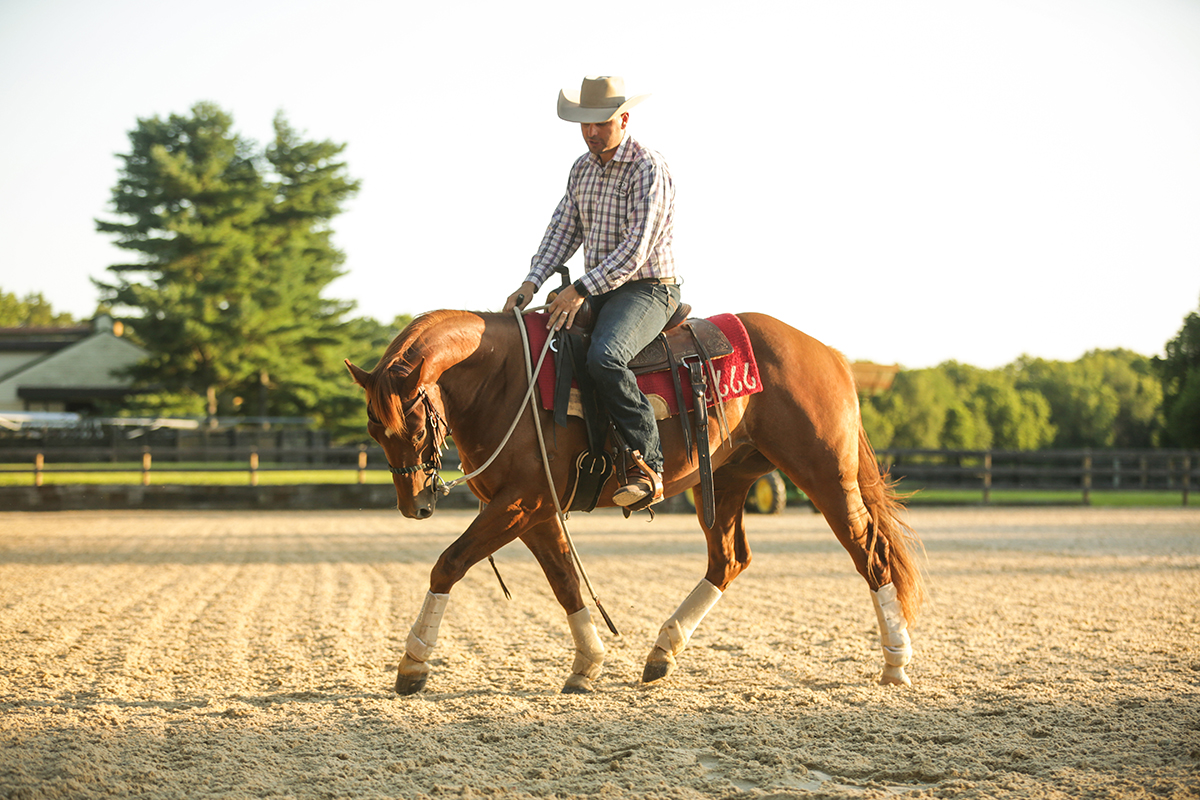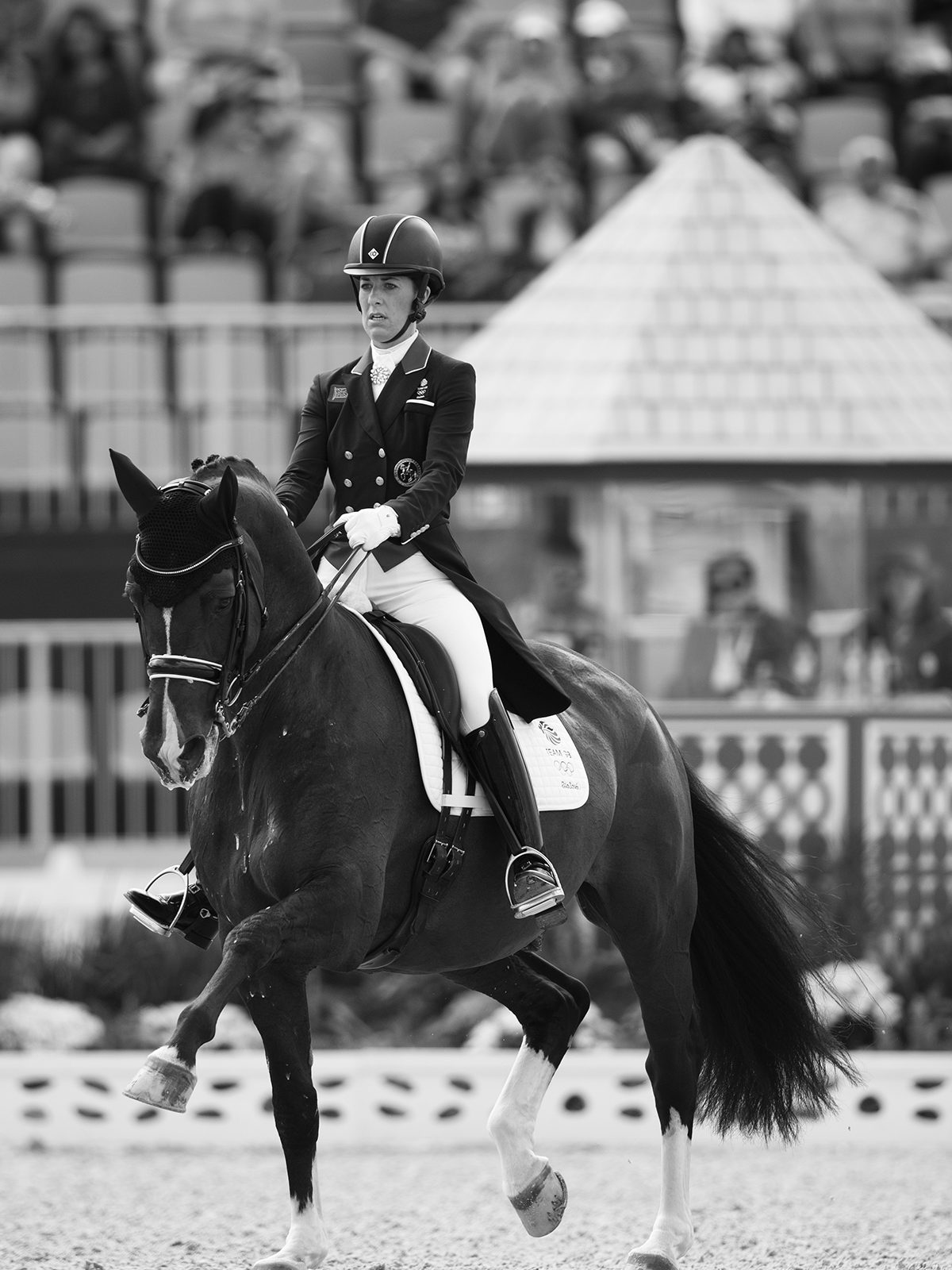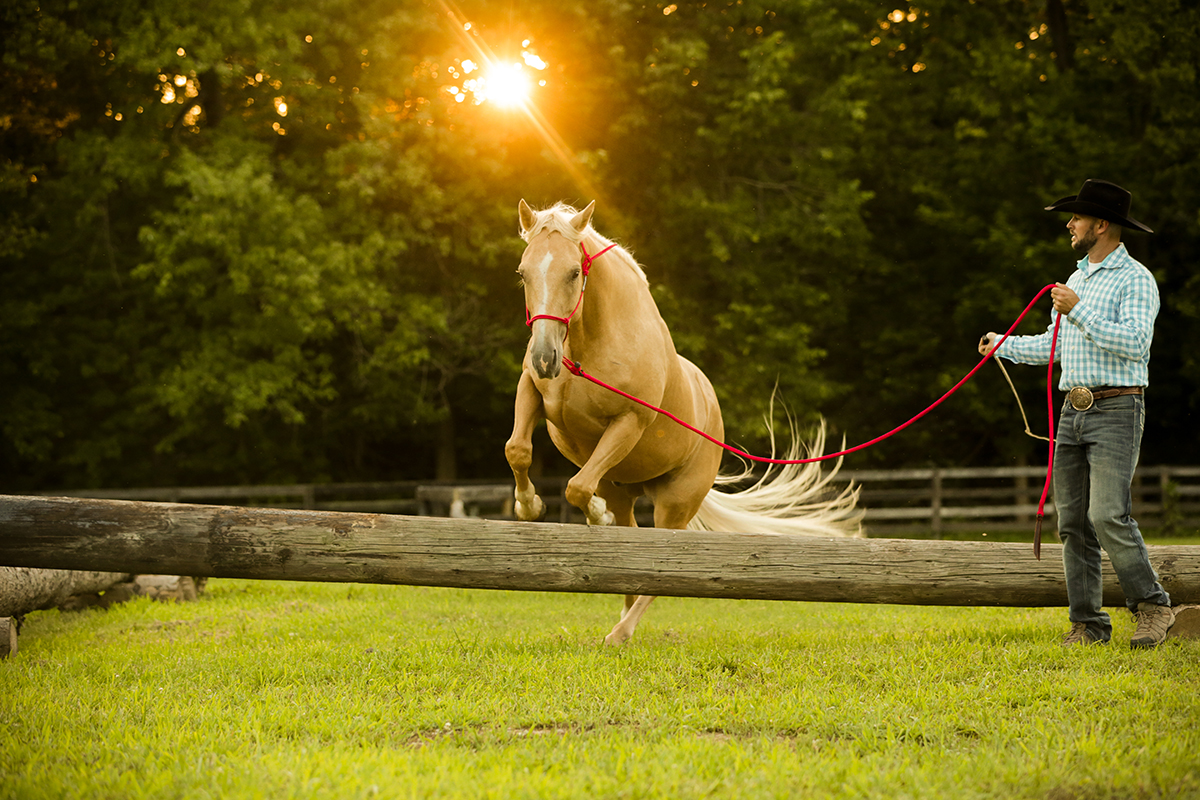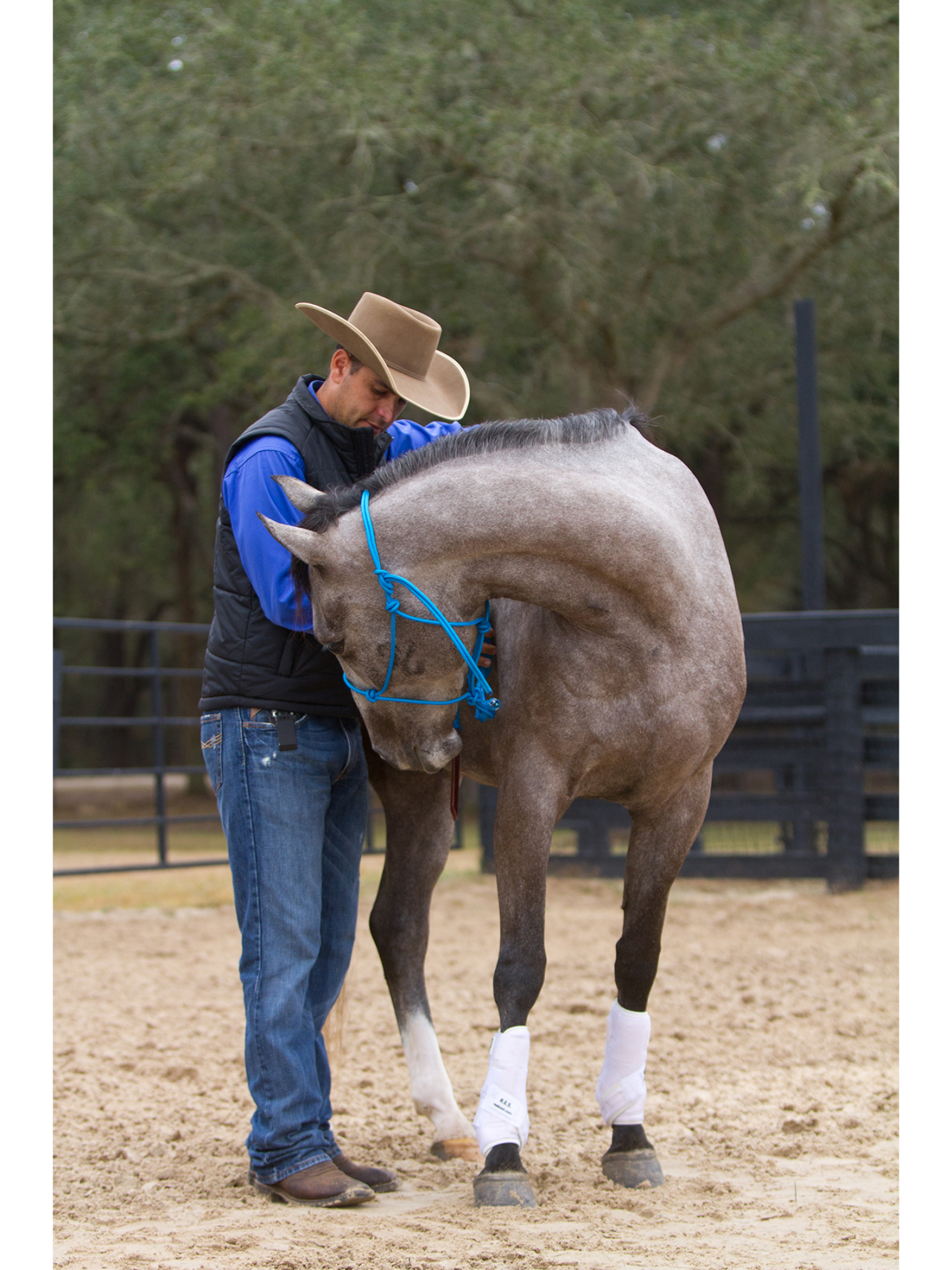Achieving correct balance is more complex than it first appears and can only be fully addressed once we recognise there are four types of balance to take into account – physical, mental, natural and man-made.
Following from my initial article that covered the Four Pillars of Horsemanship (The Art of Horsemanship), we delved deeper into the art of communication with understanding the principle of pressure and release (The Mental Connection). In this article, we will expand on the importance of mental and physical balance. As I’ve described previously, The Four Pillars of Horsemanship are communication, program, empathy and balance. When it comes to talking about the latter, there are four areas to consider – physical, mental, natural, and man-made.
PHYSICAL BALANCE

Physical balance is very important. We require our horses to have even sides when working them. In most equine disciplines, this can be similar to relating horses to humans and saying they are either left-handed or right-handed.
In the past, I have struggled to diagnose the balance between left and right — is it nurture or nature? How I have come to the realisation it has to be nature is because, as a breeder of quality Australian Stock Horses, I ride a lot of full siblings. And as I’m the only person to ride them I’ve studied their idiosyncrasies and their qualities. For example, I ride four full siblings, and three out of the four turn better to the left, and one turns better to the right. I once thought this was more a rider habit — i.e. the rider being stronger on one side of their body, rather than the horse — until I found more examples proving to me that, like humans, horses have a preferred side naturally.
“Like humans,
horses have a preferred
side naturally.”
To work on improving the balance of our horses, it’s not dissimilar to improving our own ambidextrous ability – we need to practise more on our non-preferred side. The only exception to the rule is when there is physical reason why our horses favour a side; this needs to be assessed and managed by the appropriate professionals.
MENTAL BALANCE

The best way to sum up mental balance, while using an example of physical output, is exemplified by Charlotte Dujardin’s quote: “Hot horses have to learn to be ridden with your legs on, lazy horses have to learn to be ridden with your legs off.”
Often we misdiagnose mental balance for physical balance. Understanding the difference between the two can be very difficult, and we need to listen to our horse’s thoughts. An example of a physical balance issue we might be having with our horse – but yet it is actually more a mental balance problem – could be as simple as a horse not wanting to bend around the right rein on the circle as well as they do on the left rein. As a rider, we could easily come to the conclusion the horse is more physically balanced left than he is on the right. But from the horse’s perspective, he might not feel as comfortable mentally seeing the rider out of his right eye as he feels about seeing us out of his left eye. To compensate, he tries to avoid bending around the right rein and carries his head slightly to the left.
Now, at this point, you might be thinking that’s a bit far-fetched, but let me explain the theory: As a horseperson, you quickly become aware that you have two sides to a horse, and not always both sides are connected. For example, if you have an unhandled horse and you teach him to pick up his left front foot in preparation for the farrier – and only focus on the left front until it is perfect – at this point you can be forgiven for thinking that the horse should now have an understanding about the process for the right front foot. You should simply be able to pick the right front foot up. But in reality, when you move to the right side, it is like starting again. The horse doesn’t comprehend that it’s the same as the left.
At my clinics I often say you have two horses: a left horse and a right horse. This statement does apply to physical balance as well as mental balance, however mentally horses often feel more comfortable with us on their left side on the ground than on the right. A big part of this is because we tend to do more with the horse on the left side on the ground, for example catching and doing up the halter, leading, float loading, tacking up etc. When you start adding up the time we spend on the left side, it is a lot more than you think. So naturally your horse gets more comfortable with both seeing you and having you on that side of their body.

When horses first start being ridden, this transitions under saddle and for the first time the horse sees the human out of both eyes. Horses, like humans, handle their emotions differently. Some horses explode when they first see the rider on both sides of their body, and some horses go more internal and find ways to hide from that fear. A common reaction is for the horse to not fully look at us – look at the rider – on that right side of his body, instead tilting their head to the left even when tracking to the right. And like I mentioned at the start of this example, it gets misdiagnosed as being a physical balance issue. This is just one interpretation of the problem out of hundreds for the same or a similar scenario, but it is something that we need to have in the front of our mind when we’re tackling balance issues with our horse.
The good news is that I treat both mental and physical balance very similarly — that is, by doing more on the non-preferred side than the preferred side, as mentioned earlier. A simple rule you can apply is a two-to-one ratio: For every one you do on the preferred side, you do two on the non-preferred side. Within a short period of time you will be pleasantly surprised that the non-preferred side is now your horse’s stronger side, both mentally and physically.
When working more on the mental side, I am looking for signs of acceptance – not just for the horse to respond correctly, but also for the horse to feel good about responding. When working on the mental balance I will spend a lot of time allowing the horse to just stop and dwell on his thoughts when I feel that he has a positive connection towards improving the balance both physically and mentally.
NATURAL BALANCE
Natural balance is your horse’s temperament, or you could say, personality. Like all humans, horses have their own individual natural traits. Just like Charlotte so simply quoted, if your horse is too far one way on the spectrum, you need to balance them by going to the extreme opposite end of the same spectrum. This can seem extreme, but it is required to get the natural balance back to the centre.
So, we’ll use Charlotte’s quote as a training example. If you have a naturally forward horse, how would you teach him to go forward with legs on? We need to get the point of balance of the release of pressure (see my article The Mental Connection) on the opposite side of the spectrum. So think: “I need to reward the horse for being lazy. As the horse’s reward is the release of pressure, I will apply leg pressure to my horse’s belly”. As you can imagine, with the naturally forward horse this will entice the horse to go faster, and at the exact time the horse speeds up I will maintain leg pressure but apply stronger rein contact to engage a braking aid. As the horse slows down, and even if a mild slowing-down initially, I will release leg aids as a way of rewarding the horse for slowing down. This is the opposite of what we would usually do. I want to connect the horse to the thought, “Hey, if I slow down I can get the rider’s legs off me”.

Now, this is just the starting point, but we have planted the seed. As we progress and the horse gets confident, he will start slowing down as we take up our leg contact without us using the rein aid. Pretty quickly, and if applied correctly, the horse sees our leg contact as a comfortable way to slow down, and now you will have a hot horse learning to go forward with leg on. This still requires balancing out, because pretty soon you will be trying to get the hot horse to move forward under leg pressure again.
The balancing process is the same as the other side of Charlotte’s quote: “A lazy horse has to learn to go forward with legs off”. In short, the release of pressure needs to be on the opposite side. When the horse is going forward, legs off; firstly, a naturally lazy horse will slow down as he is used to the rider only taking leg pressure off when they want the horse to slow down. But we need to reward the horse for going forward, and releasing the leg contact is the reward. As the horse slows down, become active with your legs again immediately; when the horse becomes more forward, release leg contact. This process is repeated the same as before, building the horse’s confidence and understanding of the new release of pressure until the horse is willing to go forward without being driven forward.
MAN-MADE BALANCE
Man-made is as it sounds. It’s when a human has created an unbalanced horse, both mentally and physically, or a combination. Using Charlotte’s quote and training example from the “Natural” section of this article, I explained how we as a human can influence the horse’s natural balance. That’s man-made. That was a positive example of man-made mental balance, but unfortunately often we are responsible for changing our horse’s mental and physical balance negatively without being aware.
The topic of “Balance” might be more complex than it appears at first, but I am hoping this has inspired your thoughts and conversation. EQ
This article first appeared in Equestrian Life’s March/April 2018 issue.
YOU MIGHT ALSO LIKE TO READ:
The Art of Horsemanship – Equestrian Life, May 2024
The Mental Connection – Equestrian Life, June 2024

